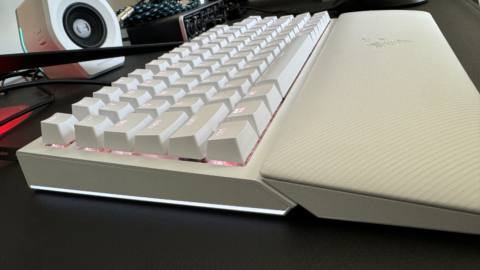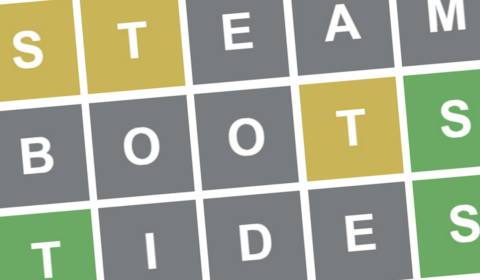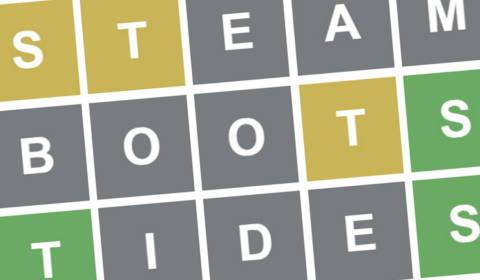If you’re deciding on the right size of gaming keyboard for you then Razer may have an answer. Enter the Razer BlackWidow V4 75%, which aims to pack in all the gaming prowess of its larger sibling into a much smaller footprint. This newer iteration comes in smaller than tenkeyless, but a touch taller and wider than 60%. It gets a lot right for the most part, even if there’s little that’s exciting about this revision.
The main sellbig USP of the Razer BlackWidow V4 75% is that it’s fully hot-swappable. Priced at $180/£190, it’s a more affordable keeb offering this functionality when compared to the competition. This can be evidenced when contrasting with the pricier Asus ROG Azoth 75% at $250 / £270 and the full-size Mountain Everest Max at $200 / £190. It’s rare when the boomslang brand can come out as the king of value given the company’s boutique status and branding, but I’ll take it.
My review unit comes pre-loaded with third-generation Razer Orange tactile switches which are said to deliver a quiet typing experience. I can verify this; they are notably quieter than the manufacturer’s Green Clicky switches but are a touch louder than its Analog Optical switches that you’ll find in the likes of the Razer Huntsman V3 Pro TKL.
While no other sets of switches are included, you can buy new switches from Razer for $25 / £25 a piece. It would have been nice to have an extra set in the box to play with, but that would have seemingly undercut the more aggressive pricing here.
Handily, Razer has included a multi-tool for pulling keycaps and switches in the box. The Razer BlackWidow V4 is held together with just five Phillips head screws for ease of access. Once you’ve lifted the lid, you’ll see the tape-enhanced PCB, the plate foam and the plate itself which you can slot the new switches in. The gaming keyboard supports both three and five-pin options, so it takes the manual labor of having to build a board entirely from scratch.
Razer claims that the BlackWidow V4 75% has been made with an “optimized typing experience” in mind. As there’s no way to change the actuation here, the company has instead fine-tuned a solution. From my experience, even as I write this review, I can say that it’s among the best gaming keyboards that I’ve typed on, which surprised me given the form factor. It feels like a bigger deck than it is despite taking up less room than a TKL equivalent.
What’s also neat is how the design ethos of the full-size Razer BlackWidow V4 has been accurately carried over with the 75% version. This is evident in the new shrunken-down media roller in the top right matching the original in all but length, and the media buttons. You now get two instead of four, acting as pause and mute, but they get the job done. What’s won me over, though, is the extra plush wrist rest, which is incredibly comfortable. A joy to use after becoming accustomed to harder plastic rests over the last few years. It may not sound like much, but if you work from home or want something to take into the office, it can make a difference.
Speaking to the form factor, the 75% variant does a solid job of skirting the line of size and function. It’s a touch smaller than a tenkeyless model, but larger than a 60% variant as touched upon above. That means you’re benefiting from a full function key row and page keys. It does result in the overall board looking a little short and tall, but in practice, it works well. If you ever found a 60% too cramped to game or work on then maybe this slightly bigger deck could sway you.
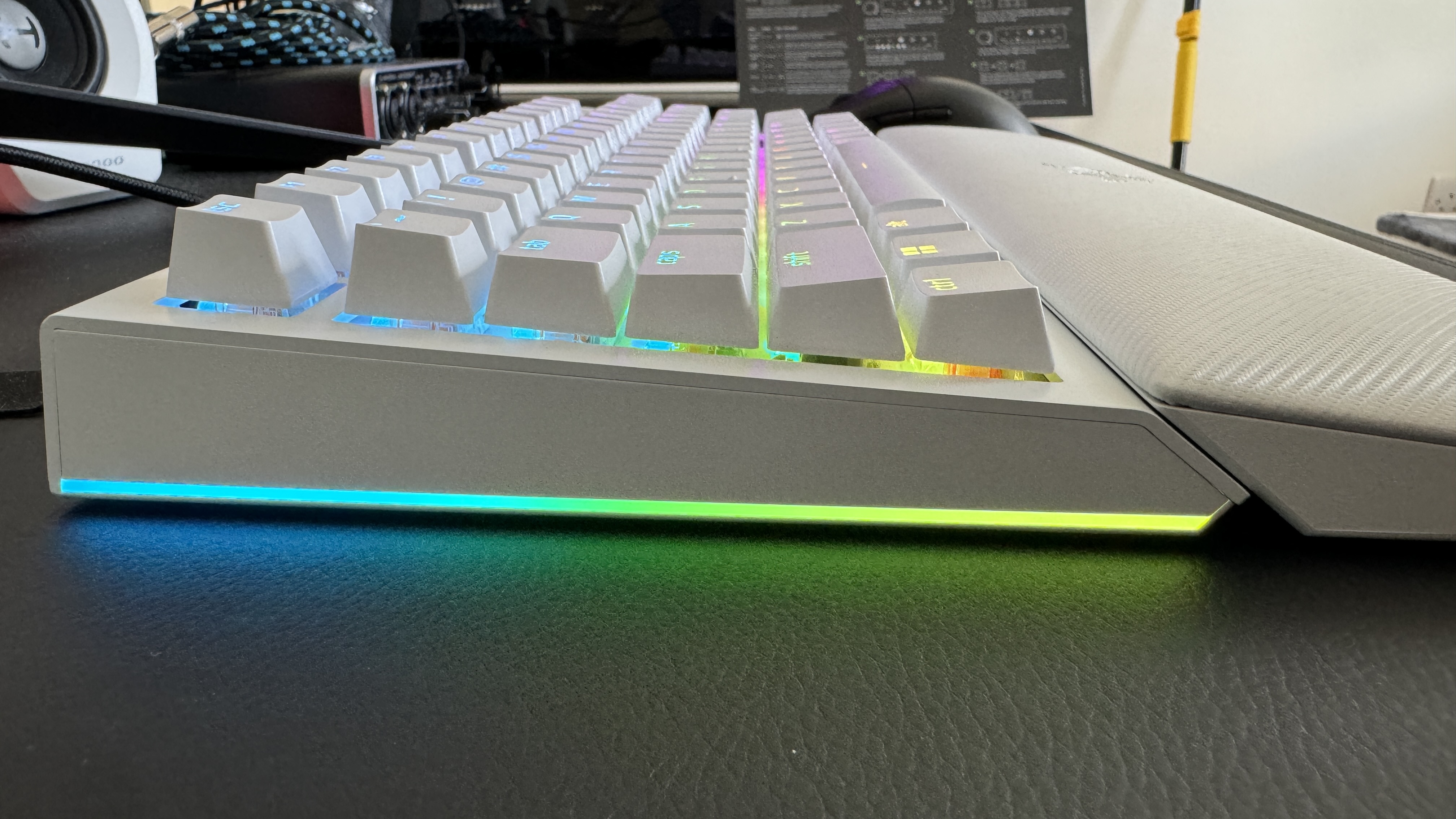
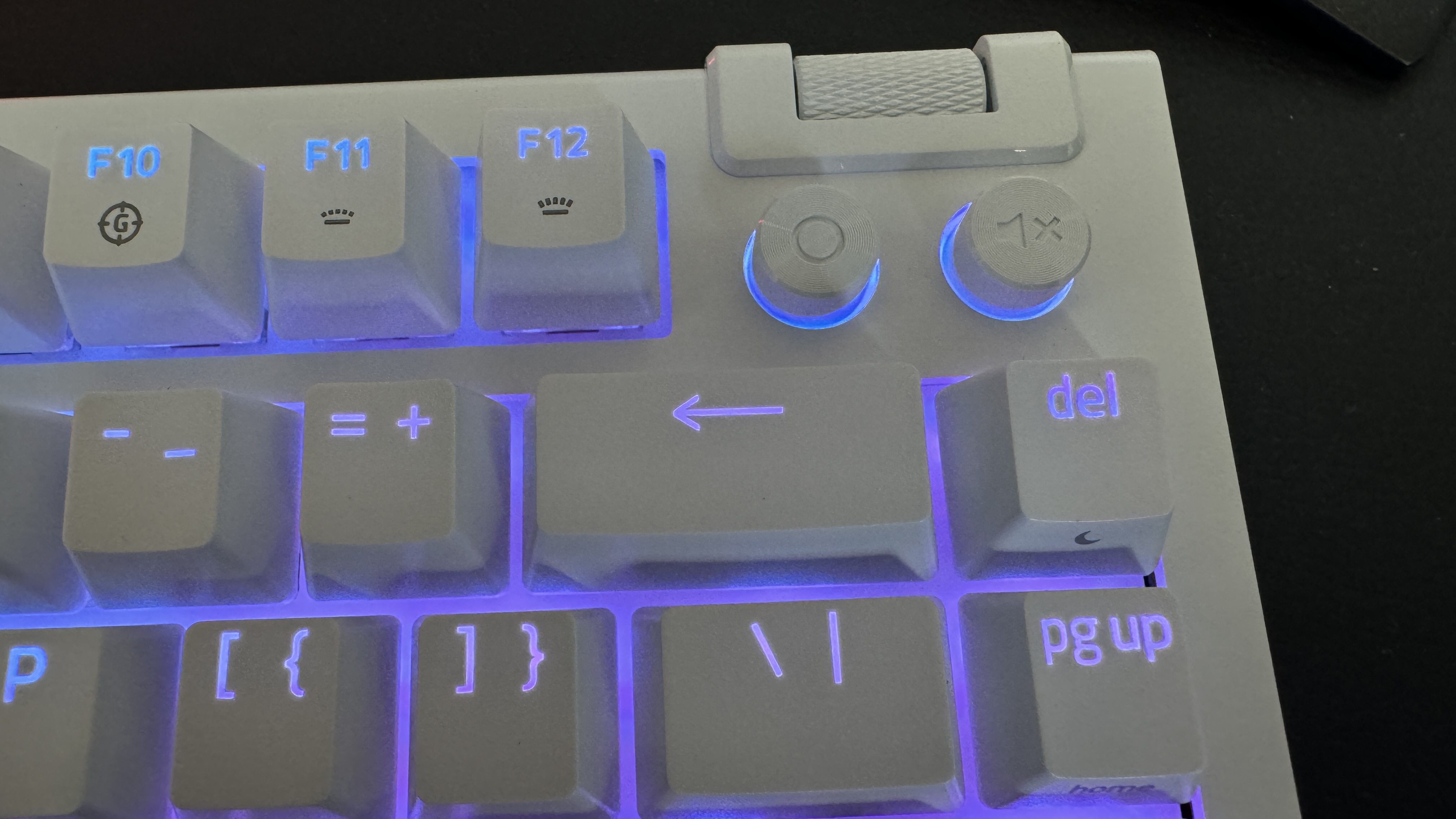
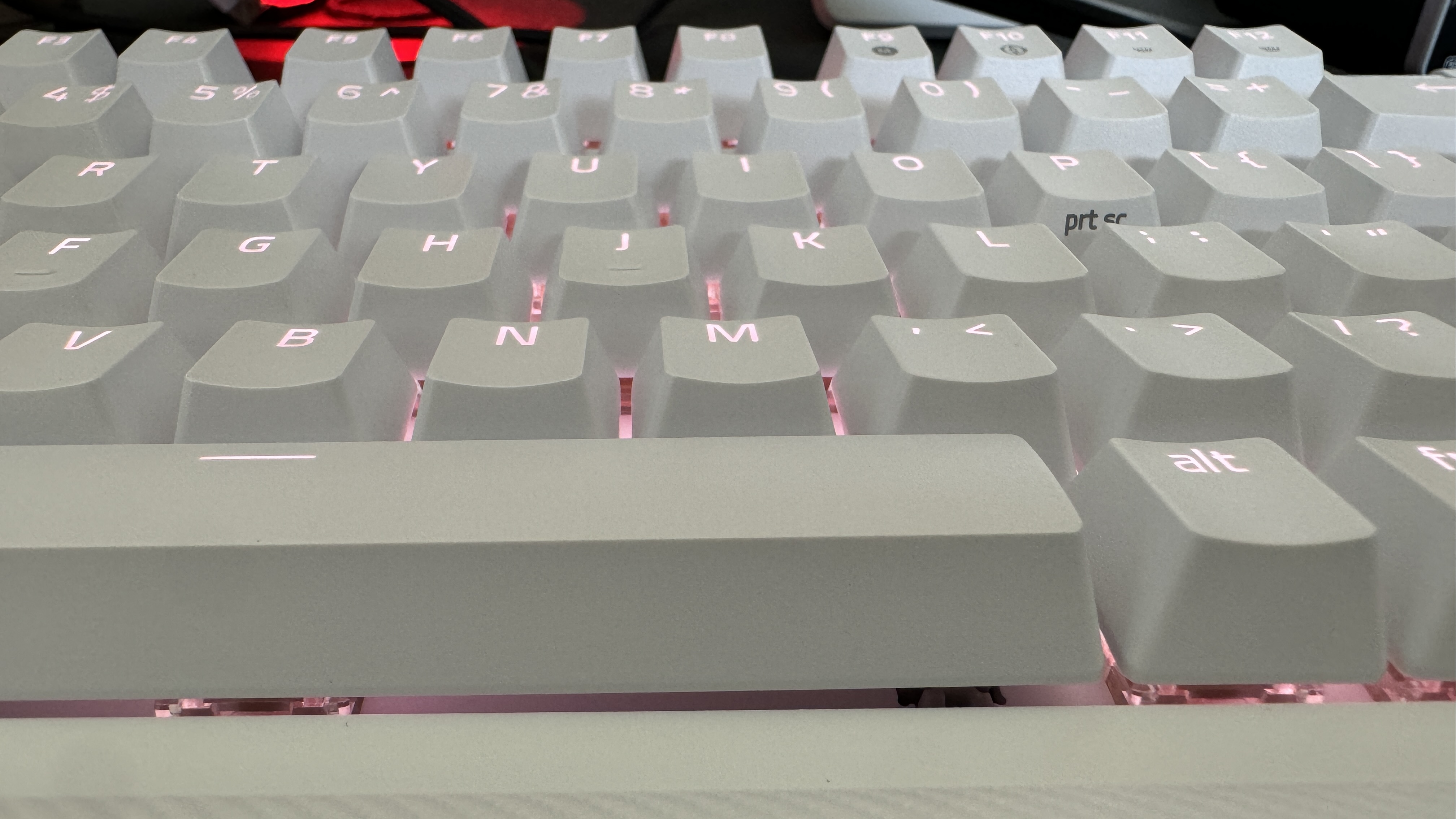
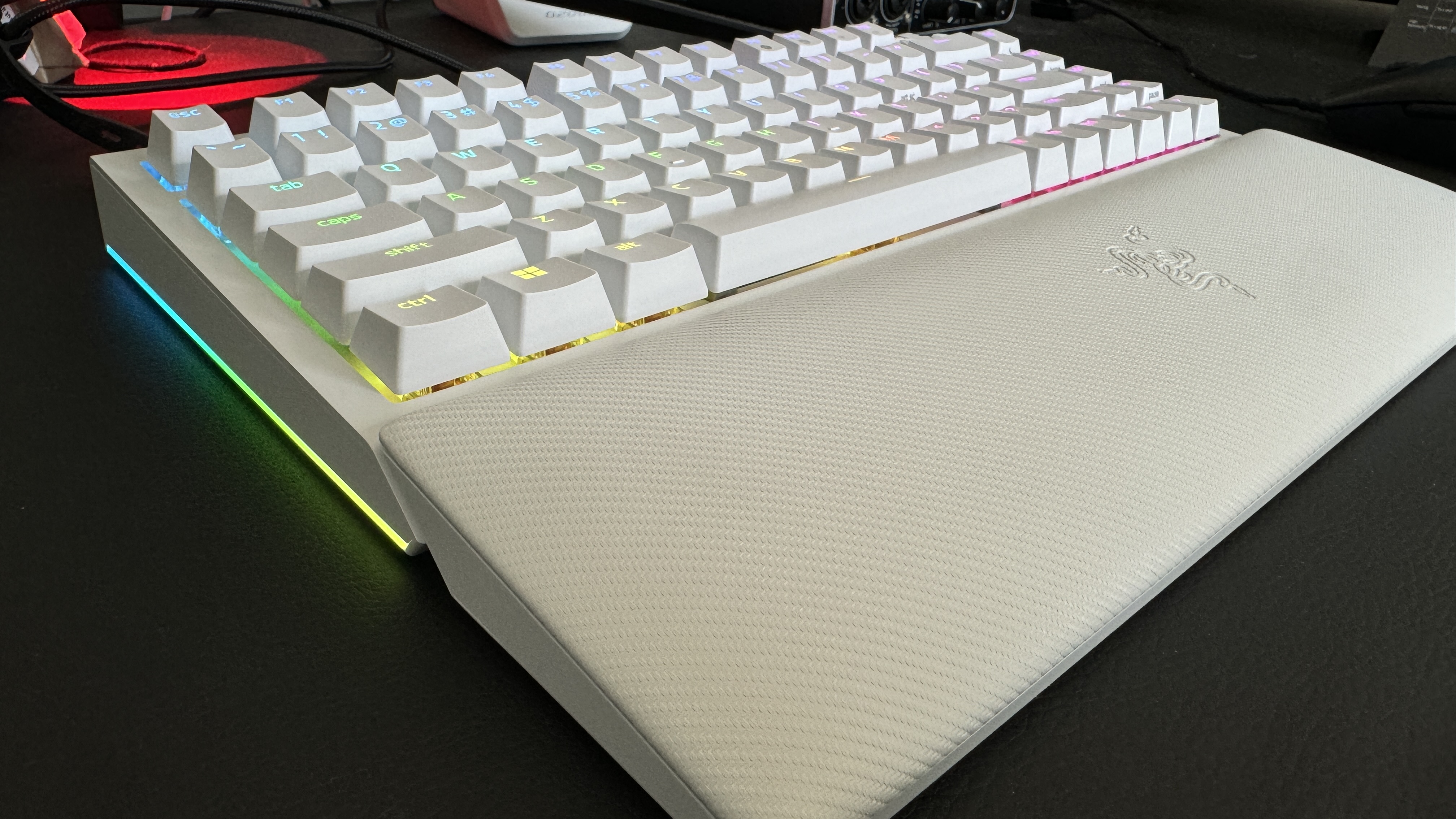
✅ You want an affordable hot-swappable keyboard: The BlackWidow V4 75% doesn’t exactly come cheap but it does undercut a good chunk of its competition in the space without skimping on the functionality.
✅ You want a compact gaming keyboard: If you’ve found a tenkeyless takes up too much room and you’re not a fan of the cutbacks made on a 60% then this 75% variant may be the solution you’ve been waiting for. There’s a full function key row as well as a media bar in a very similar footprint.
❌ You aren’t fussed about changing out the switches: If you’re thinking of buying this as a one-and-done gaming keyboard without ever opening it up then you may be in for disappointment. Simply put, there are cheaper keyboards from Razer that offer the same level of performance, which might be better for you.
❌ You want a wireless hot-swappable keyboard: While the BlackWidow V4 75% keeps competitive being far cheaper than the Asus ROG Azoth, you’re missing out on wireless functionality here. You’ll need to consider something else instead.
Gaming on the Razer BlackWidow V4 75% is a great experience. I’ve been spending more hours than I care to admit running through Dark Ages England in Assassin’s Creed Valhalla and this deck did an excellent job of feeling sharp and responsive whether I was in combat situations with a group of irritated soldiers or on horseback through the fields. It also performed well in more immediate titles such as The Finals; just a couple of games in, and I was used to the smaller travel time of my hands to hit the keys against my usual full-size deck.
It wouldn’t be a Razer product if it didn’t feature Chroma RGB in some capacity and this gaming keyboard is no exception to the rule. There’s per-key lighting which can be tailored to your liking in the Synapse software from breathing to audio reactive, spectrum, ambient, etc. There’s nothing groundbreaking here, but it works well. The lighting is bright and vivid even in the daylight hours and looks especially good contrasting against the all-white design.
The decision of whether this new deck is right for you is going to depend on your preference. If you’re in the market for a hot-swappable gaming keyboard which is cost-effective and compact then it’s an easy recommendation. However, if you want more advanced features and a larger size then you may be better suited to an alternative, such as those touched on above.
It’s commendable that Razer was able to make this for well under $200 / £200 without sacrificing the build quality, so I think it’s worth a go as a first foray into keyboard modding at the very least.

